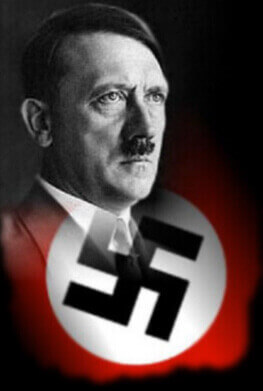Chapter XI: The Psychological Interpretation of Culture and History
|
||
Based on analysis of Hitler’s writings and speeches, I’ve found that he conceived of the German nation as an organism—as an immortal organism that could “live on.” Hitler’s ideology performed a profound psychological function for Hitler. His ideology represented the medium through which Hitler dealt with the problem of death. Hitler conceived of Germany as an actual body politic. He called the German nation a real “substance of flesh and blood,” stated that France was “tearing piece after piece out of our national body,” and compared Germany’s loss of the Polish corridor to a “strip of flesh cut from our body.” It was to the national organism, Germany, that Hitler devoted his life. The purpose of every idea and institution, Hitler said, was to “maintain the substance of the people in bodily and mental health.” One sought to preserve the “body formed by the people in the present” in order to “secure in the future the maintenance of this body.” Hitler’s aspired to create a German body politic that would live forever. The German organism, however, Hitler believed, was beset by a powerful force working against his aspiration. Hitler identified the Jew as a force within Germany working to bring about its demise. The Jewish “ferment of decomposition” was acting to “disintegrate” the national body. Hitler conceived of his political career as a struggle of “life against death.” On the one hand was the healthy German nation. On the other hand was the Jew, the “demon of disintegration” among peoples. Hitler insisted that Germany would “never capitulate before the ferments of disintegration.” Hitler implored his people to devote themselves to Germany. “Our nation,” he declared, is “not just an idea in which you have no part.” The nation, he explained, is the “Root of your very life. You cannot separate yourself from it. Your life is bound up with the life of your whole people.” It is important to understand that when Hitler spoke of “the people,” he was not referring to actual human beings. “The people,” for Hitler, was an idea, a concept. Hitler stated that the liberal Weltanschauung, in its “deification of the single individual,” would lead to the “destruction of the people.” National Socialism, on the other hand, would “safeguard the people even at the expense of the individual.” Organisms by definition—at a certain point in time—cease to exist. The German nation, however, according to Hitler, was a unique kind of organism—capable of living forever. Still, Hitler sensed the presence of forces within the body politic working to destroy it. He viewed Jews as “disintegrators of peoples.” Their presence caused the “falling to pieces of the organic structure of the nation.” The Jewish threat might cause Germany to “dissolve into its basic elements.” So here, in a nutshell, is the basic structure of Hitler’s ideology: (1) Germany is an organism that has the potential to live forever. (2) The Jew is a force within the nation working to cause it to disintegrate. The Final Solution represented a solution to the conflict between life against death. Its purpose was to eliminate the force within the nation that would lead to its demise. If Jews did not exist, Hitler claimed, the German nation could live forever. Anti-Semitism is a cultural form. Hitler used this ideology to solve the problem of death. What Hitler did was to split off the idea of death and project it into the Jew. Jews symbolized the death instinct: that which leads each organism to its demise. Having projected the idea of death into the Jew, it became possible to “do battle” against death. Hitler created a “war against Jews,” the Final Solution. If there were no Jews in the world, Hitler hypothesized, Germany could live forever. |
